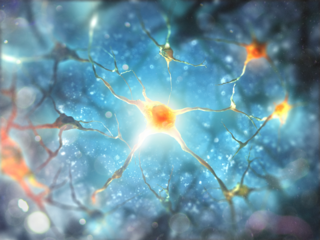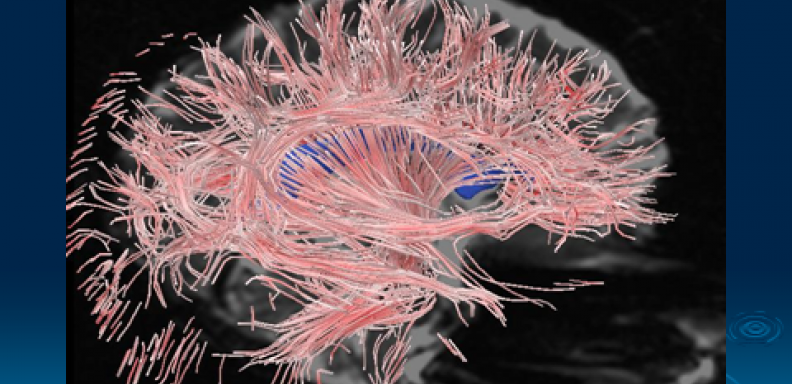What New Research Is Telling Us About Treating BFRBs
Understanding a patient’s unique biochemistry and neurobiology may be the key.
Posted Jul 17, 2019
The following guest post was authored by Jon E. Grant, MD, JD, MPH, Professor of Psychiatry and Behavioral Neuroscience at the University of Chicago and Chair of the Scientific Advisory Board of The TLC Foundation for Body-Focused Repetitive Behaviors.
While research in body-focused repetitive behaviors (BFRBs) has been steadily growing for years, knowledge regarding treatment is still limited. Here are some of the major questions that we simply cannot answer at this time with any real degree of confidence:
- Should all the BFRBs be treated the same?
- What percentage of people respond to behavioral therapy? To medication?
- How much therapy does a person need?
- How long does a person need medication?
- What should the goal of treatment be? Should people expect to stop pulling/picking or simply reduce their behaviors?
- How long does a person maintain the benefits of therapy and what should they do if the pulling/picking worsens again?
- What particular type of behavior therapy is best for a particular person, and does any feature of the BFRB give us clues to the answer?
- If behavioral therapy and medication do not work for a person, then what?
Although these questions remain largely unanswered at this time, we are making some progress in developing new, and we hope better treatment options. For example, we discovered in a study of naltrexone for the treatment of trichotillomania (a study that seemed to suggest that the medication was not better than placebo) that those people with trichotillomania and a first-degree relative with alcoholism responded very well to the medication, whereas those without alcoholism in their family did not.1 This study provided some clues as to how understanding family history (and ultimately genetics) might further refine our treatments and help us understand why some people respond to a certain treatment while others do not.

Source: Shutterstock
Similarly, we examined levels of glutathione (a marker of oxidative stress examined by taking blood from a person) in a small number of women with trichotillomania and found that about a third had low levels of glutathione, and that lower levels of glutathione correlated significantly with higher motor impulsiveness.2 Because N-acetyl cysteine, a commercially accessible nutraceutical shown to ease BFRB symptoms in some,3 is a precursor for cysteine, and cysteine is a rate limiting step for glutathione production, these results may shed light on why some individuals with BFRBs respond to N-acetyl cysteine and others do not. This may suggest that certain blood biomarkers can help refine treatment approaches.
article continues after advertisement
While clinical research continues, we know that people with BFRBs have experienced mitigation of symptoms from a number of therapeutic approaches. Various types of cognitive behavioral therapy (CBT) are the most widely used treatments for BFRBs:
-
Habit reversal therapy (HRT) is probably the most commonly used treatment and generally has several core components: awareness training (encouraging awareness of situations that can precede picking/pulling episodes), relaxation training (since anxiety and stress are commonly reported triggers for picking/pulling episodes), competing response training (encouraging unwanted picking/pulling behaviors to be replaced with some other action), and motivationprocedures.4
-
Comprehensive Behavioral Treatment is based on the assumption that a person engages in their BFRB because it meets one or more needs in the individual (e.g., helping to relax, to fall asleep, or to feel like a goal was accomplished). This model focuses on understanding why, where, and how a person engages in their BFRB so that individualized interventions can be selected to help the person achieve what they want to achieve without engaging in the BFRB, and consists of four components: Assessment; Identify and Target Modalities; Identify and Choose Strategies; and Evaluation. It focuses on understanding five domains: Sensory, Cognitive, Affective, Motor, and Place (SCAMP). 5
-
Elements of dialectical behavior therapy (DBT) have been added to more traditional CBT approaches for the treatment of BFRBs. DBT generally consists of mindfulness training (e.g., patients are taught to experience urges or negative emotions as they occur in the present moment and learn to allow them to pass without picking/ pulling), developing skills to regulate negative emotions without picking/pulling, and building distress tolerance (e.g., tolerating urges or stressful events without picking/pulling).6 In addition, acceptance and commitment therapy (ACT) is a form of CBT in which people are asked to experience urges to pick/pull and accept the urge without acting on it. The negative emotions involved with picking/pulling are also engaged but not acted upon. The idea is that understanding, feeling, and experiencing the fact that the individuals do not have to respond to an urge or emotion can help a person feel more in control of their picking/pulling.7
-
Exposure response prevention therapy (ERP), borrowed from the world of OCD, has been used in some preliminary research to help with BFRBs. ERP is based on the conceptualization that BFRBs are maintained by negative reinforcement similar to compulsions in OCD. ERP involves generating a BFRB hierarchy and using exposures based on the individual's hierarchy while also addressing emotion dysregulation.8
Medications may also be effective for BFRBs but there is less evidence guiding recommendations for medication compared to behavioral therapy. N-acetyl cysteine, olanzapine, and clomipramine have shown benefit for BFRBs in rigorous clinical trials.3
Other ways researchers are trying to better understand BFRBs include examining the cognitive processes of those with BFRBs or doing neuroimaging of the brains of people with BFRBs and, by doing so, improve treatments. Initial data from one such project, the BFRB Precision Medicine Initiative, suggests that understanding a patient’s unique biochemistry and neurobiology may be the key to prescribing treatment approaches that bring lasting relief of BFRB symptoms.
References
1. Grant, J. E., Odlaug, B. L., Schreiber, L., & Kim, S. W. (2014). The opiate antagonist, naltrexone, in the treatment of Trichotillomania: Results of a double-blind, placebo-controlled study. Journal of Clinical Psychopharmacology, 34, 134-138.
2. Grant, J. E., & Chamberlain, S. R. (2018). A pilot examination of oxidative stress in Trichotillomania. Psychiatry Investigation, 14, 1130-1134.
3. Grant, J. E. (2015). Review of psychopharmacological approaches for Trichotillomania and other body-focused repetitive behaviors. Current Treatment Options in Psychiatry, 2, 422-431.
4. Woods, D. W., & Houghton, D. C. (2016). Evidence-based psychosocial treatments for pediatric body-focused repetitive behavior disorders. Journal of Clinical Child and Adolescent Psychology, 45, 227-240.
5. Falkenstein, M. J., Mouton-Odum, S., Mansueto, C. S., Golomb, R. G., & Haaga, D. A. F. (2016). Comprehensive Behavioral Treatment of Trichotillomania: A Treatment Development Study. Behavior Modification, 40(3), 414–438.
6. Keuthen, N. J., Rothbaum, B. O., Welch, S. S., Taylor, C., Falkenstein, M., Heekin, M., … Jenike, M. A. (2010). Pilot trial of dialectical behavior therapy-enhanced habit reversal for trichotillomania. Depress and Anxiety, 27, 953-959.
Woods, D. W., & Twohig, M.P. (2008). Acceptance-enhanced behavior therapy for Trichotillomania: Therapist's guide. New York, NY: Oxford University Press.
About the Author
Online:




